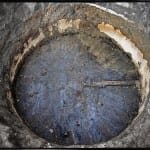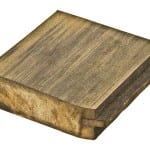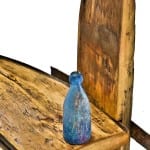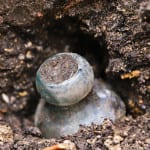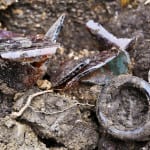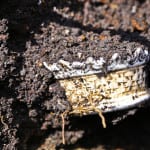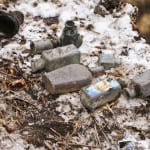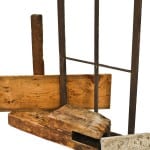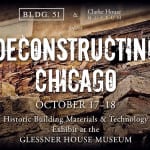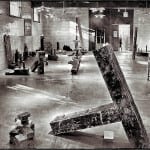an afternoon documenting turn of the century trash found beneath a demolished cottages
This entry was posted on February 24 2016 by Eric
this week three lots located on west ohio street were in the beginning phase of being dug by workers from one of many demolition companies i work with. the lot being excavated once contained a small workers cottage that i missed the chance to document during its demolition late last year. the cottage stood directly across from the building where notable chicago architect john vinci has his offices.
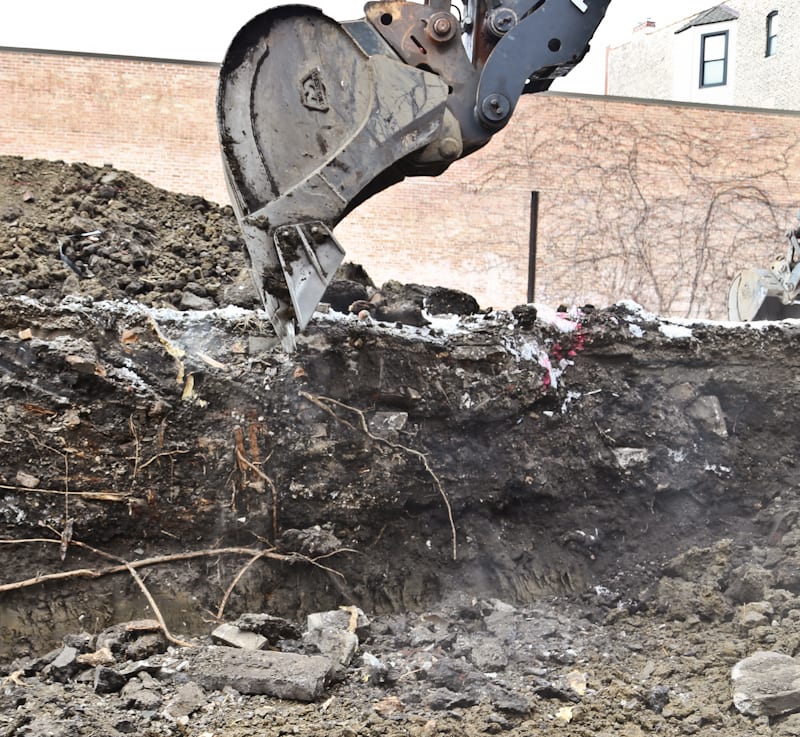
as always i bring an optimistic attitude to the dig, eagerly hoping that a long-forgotten pre-chicago fire privy pit will be nestled undisturbed, somewhere in the back, along the lot lines where the house once stood. i envision finding a pit packed tightly with 19th century rubbish left behind by the occupants of the house or cottage for whom it was built. though i am hopeful, after a year of visiting one excavation after another, i've concluded that finding a fully stocked privy pit is highly unlikely, unless the house was built long before the chicago fire, during a time when city street sanitation was still in its infancy, when very few city ordinances were on the books, and when "night scavengers" were assigned the task of cleaning out or "dipping" existing residential privy vaults (but had yet to become a profession worth mentioning in city directories).
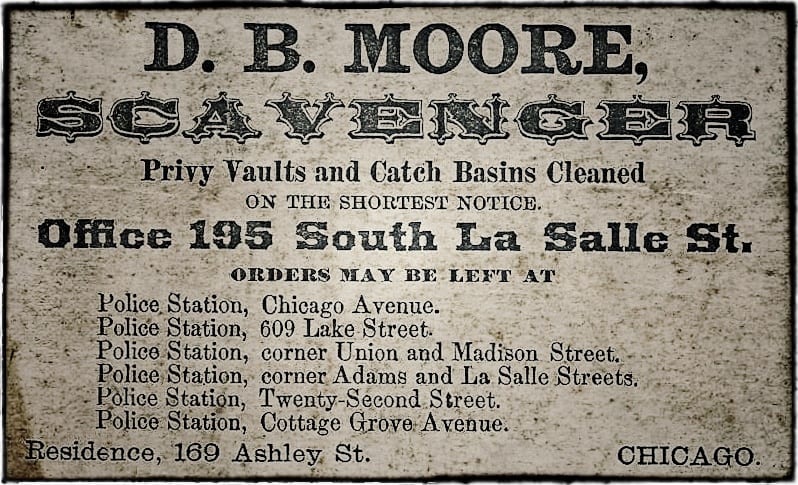
more often than not, i find sporadic ash or burn pits, containing shallow pockets of ash, melted industrial by-products (which people commonly mistake for "remnants" of the great chicago fire), a handful of bottles (both intact and broken), animal bones, coal, and piles of pottery shards. the few privy vaults i've discovered thus far were likely dipped, since they yielded very few artifacts. at least the materials used to build the floor and walls of the "chicago style" pits have been in great shape, and the extracted remnants have proven useful in analysis of the design and construction at a given time period.
based on my research there is a great likelihood that 19th century rubbish would be unearthed between where the two houses stood, and/or towards the back lot lines. within the first hour of the excavation several pockets of trash were in fact found along the buried brick and stone foundation, leftover from a neighboring house or small masonry building torn down long ago. i was surprised by the overall volume of trash, which was uniformly spread along the lot line between the houses.
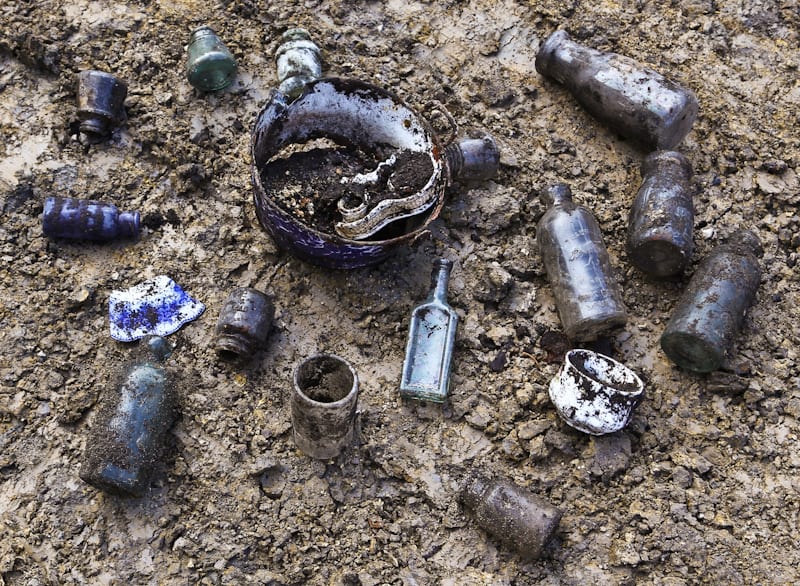
there were two layers, with the topmost consisting of buried artifacts dating from 1910-1930. the second layer, located approximately three feet below the first layer, contained trash dating as early as the late 1880's, with a few intact bottles reinforcing the approximated dates.
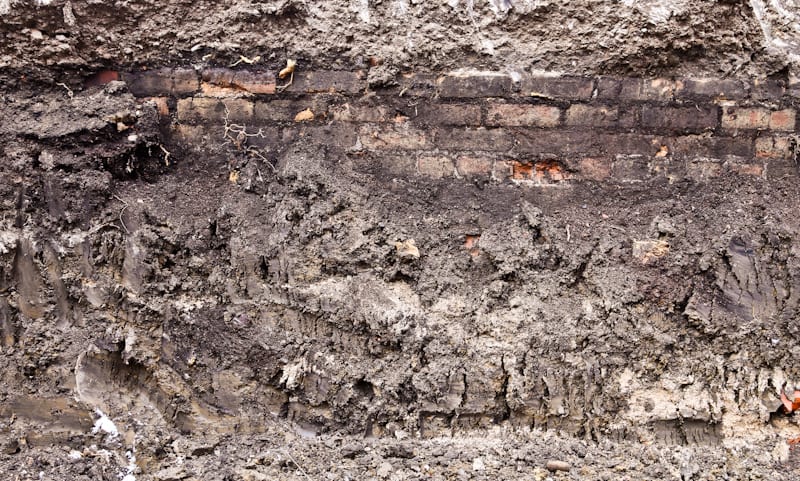
the existence of privy pits or "vaults" and/or "ash pits" (the latter being a densely concentrated collection of material, often disfigured and blackened by surrounding or fused coal/coke), were not found anywhere on the lot. granted, i wasn't there all afternoon to oversee the excavation, but if there was a major discovery of sorts, i feel confident i have taught this group of workmen to identify any of the aforementioned finds. when they have called me in the past, i always rush to the sites to document as much of as possible before materials are further disturbed with the backhoe.
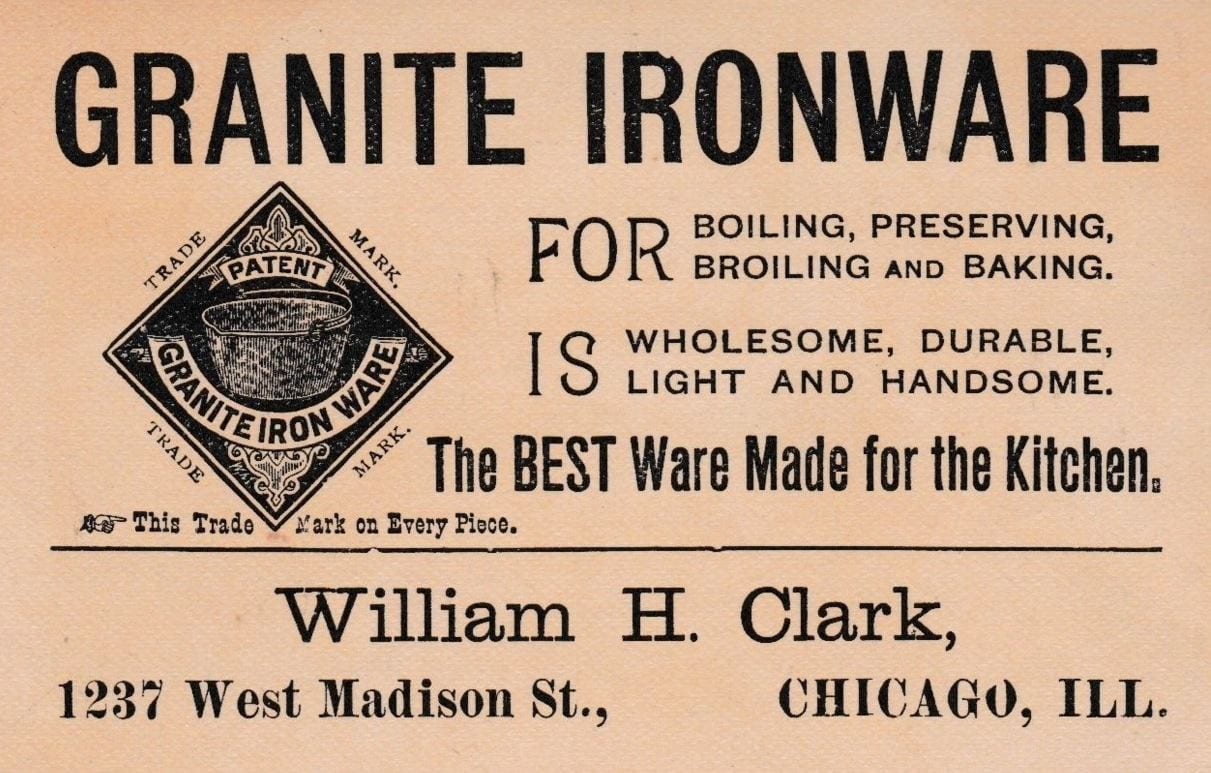

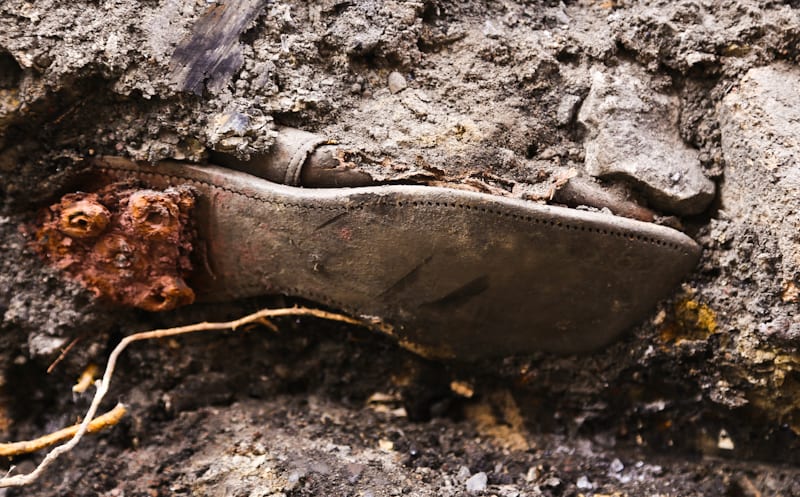
so despite this dig yielding very little in terms of artifacts for collection, i'm pleased that my commitment to the "unearthing chicago" project continues long after the data and imagery from "case studies" for the soon-to-be-published book has drawn to a close. perhaps these ongoing excavations in the present and future will provide additional insight to enrich or expound upon the conclusions i arrived at with the first edition (currently slated for release later this year).
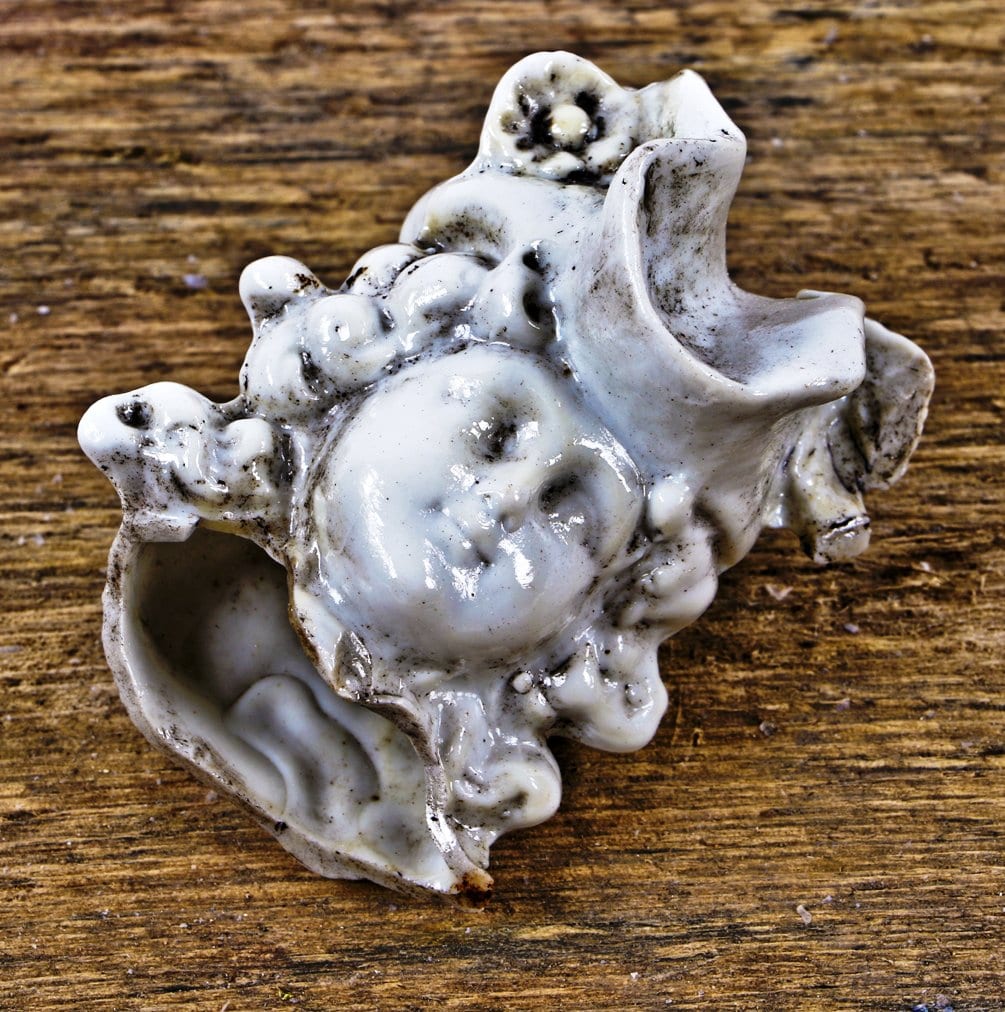
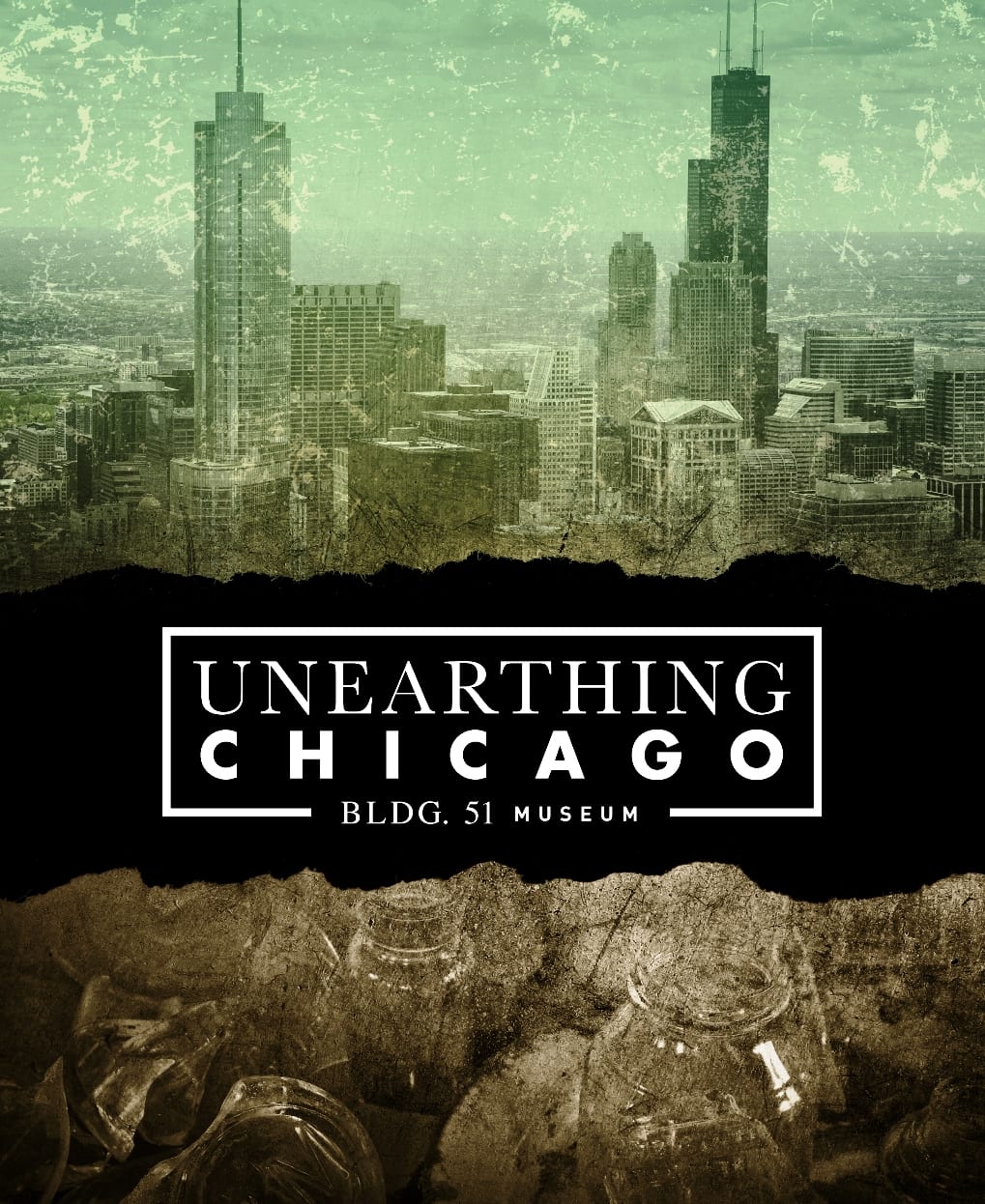
on a similar note, my enthusiasm remains just as alive in the arena of the parallel "deconstructing chicago" project, which will also culminate in an in-depth published examination of the evolutionary fluency of balloon frame construction. to this end, i continue to collect data on materials and methods used in the construction of residential and commercial structures built between 1840-1900 in chicago.
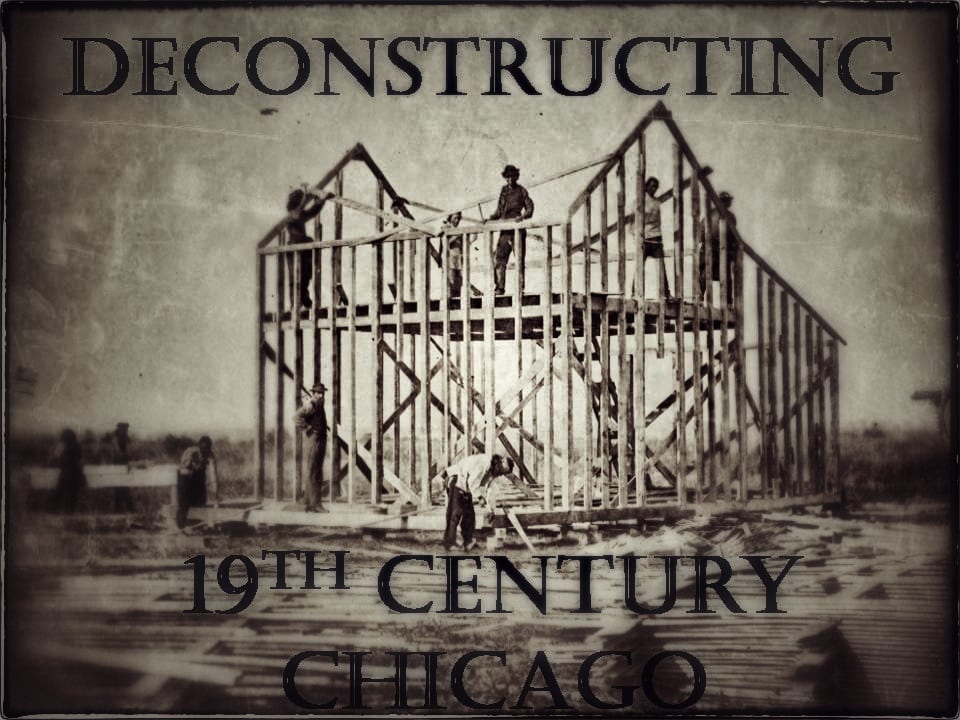
once completed, the book will address the vast complexity of these structures, and the great discrepancy between information recorded in texts like historical accounts and period building journals, and actual findings in the field, which very few researchers have access to here in chicago.
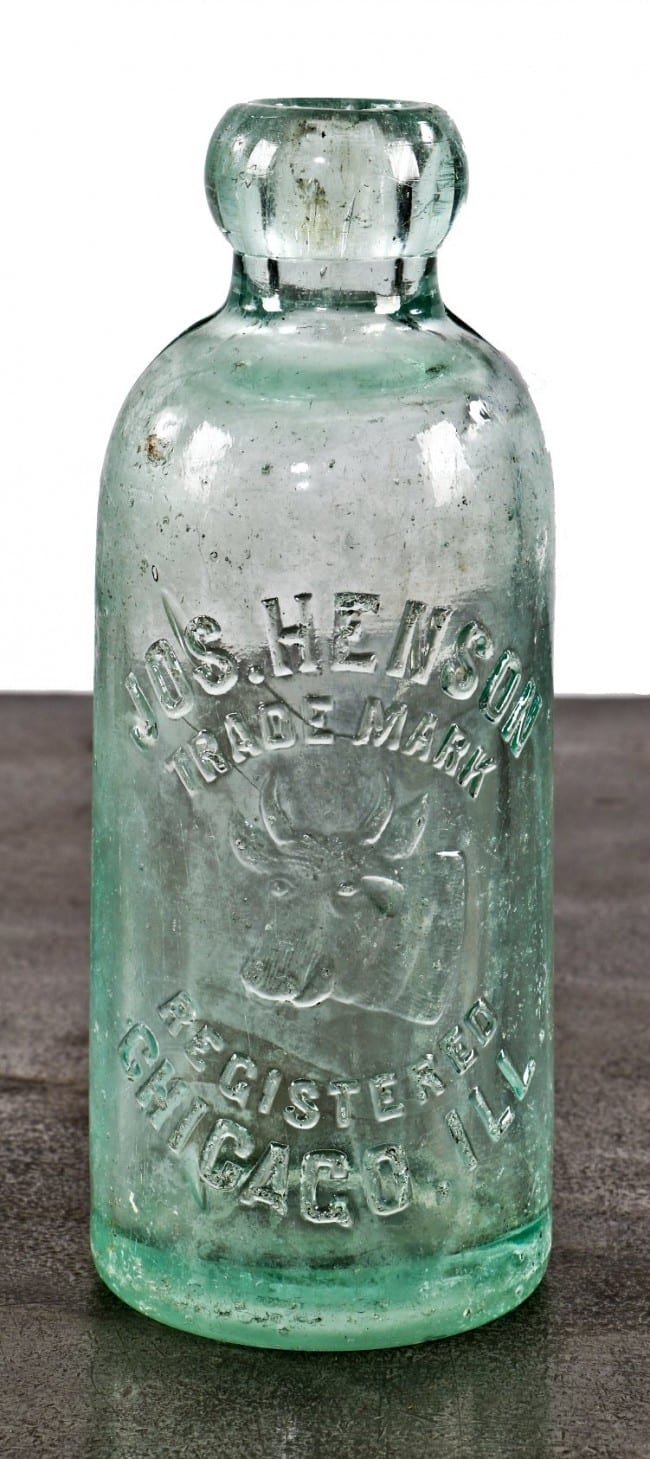
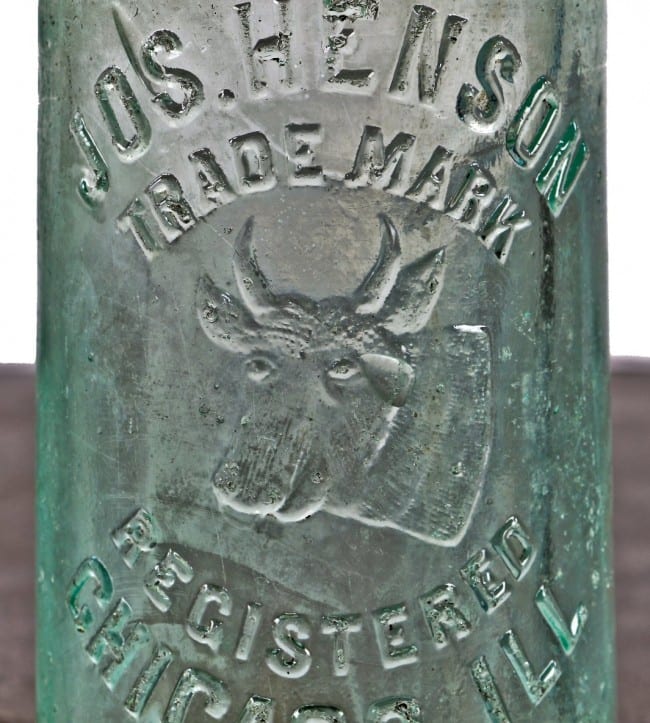
This entry was posted in , Miscellaneous, Salvages, Bldg. 51, New Products, Events & Announcements, New Acquisitions, Featured Posts & Bldg. 51 Feed on February 24 2016 by Eric
WORDLWIDE SHIPPING
If required, please contact an Urban Remains sales associate.
NEW PRODUCTS DAILY
Check back daily as we are constantly adding new products.
PREMIUM SUPPORT
We're here to help answer any question. Contact us anytime!
SALES & PROMOTIONS
Join our newsletter to get the latest information

